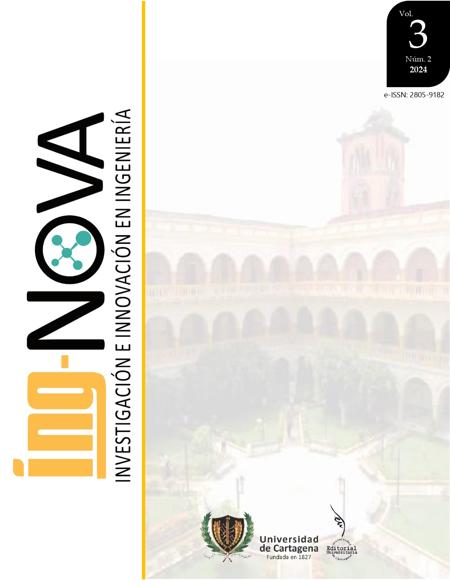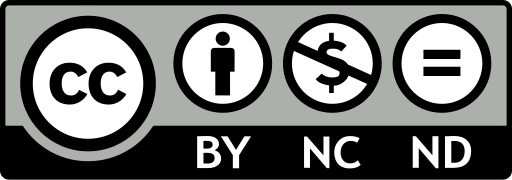Eterificación de alcohol isoamílico utilizando Amberlyst®15 como catalizador ácido
Etherification of isoamyl alcohol using Amberlyst®15 as an acid catalyst
Contenido principal del artículo
Resumen
El presente trabajo informa sobre la producción de éter diisoamílico a partir de la eterificación de alcohol isoamílico, utilizando la resina sulfónica Amberlyst®-15 (A-15) como catalizador. Se estudiaron parámetros como la temperatura, el tiempo de reacción y la cantidad de catalizador. Aunque la reacción de eterificación muestra conversiones bajas (9-18%), cuando se añade glicerol al medio de reacción y una presión externa al sistema de reacción (3,5 atm), la conversión aumenta hasta el 40% y puede obtenerse un rendimiento de hasta el 100% en di-isoamil éter.
Palabras clave
Descargas
Datos de publicación
Perfil evaluadores/as N/D
Declaraciones de autoría
Indexado en
- Sociedad académica
- Universidad de Cartagena
- Editorial
- Universidad de Cartagena
Detalles del artículo
Referencias (VER)
M.S. Buckeridge, A. Grandis, E.Q.P. Tavares, Chapter 2 - Disassembling the Glycomic Code of Sugarcane Cell Walls to Improve Second-Generation Bioethanol Production, in: R.C. Ray, S. Ramachandran (Eds.) Bioethanol Production from Food Crops, Academic Press, 2019, pp. 31-43. DOI: https://doi.org/10.1016/B978-0-12-813766-6.00002-3
J.A. Quintero, J. Moncada, C.A. Cardona, Techno-economic analysis of bioethanol production from lignocellulosic residues in Colombia: A process simulation approach, Bioresource Technology, 139, pp. 300-307, 2013. https://doi.org/10.1016/j.biortech.2013.04.048 DOI: https://doi.org/10.1016/j.biortech.2013.04.048
O.I. Awad, O.M. Ali, R. Mamat, A.A. Abdullah, G. Najafi, M.K. Kamarulzaman, I.M. Yusri, M.M. Noor, Using fusel oil as a blend in gasoline to improve SI engine efficiencies: A comprehensive review, Renewable and Sustainable Energy Reviews, 69, pp. 1232-1242, 2017. https://doi.org/10.1016/j.rser.2016.11.244 DOI: https://doi.org/10.1016/j.rser.2016.11.244
A. Hassan Pour, S.M. Safieddin Ardebili, M.J. Sheikhdavoodi, Multi-objective optimization of diesel engine performance and emissions fueled with diesel-biodiesel-fusel oil blends using response surface method, Environmental Science and Pollution Research, 25, pp. 35429-35439, 2018. 10.1007/s11356-018-3459-z DOI: https://doi.org/10.1007/s11356-018-3459-z
S.M. Safieddin Ardebili, H. Solmaz, M. Mostafaei, Optimization of fusel oil – Gasoline blend ratio to enhance the performance and reduce emissions, Applied Thermal Engineering, 148, pp. 1334-1345, 2019. https://doi.org/10.1016/j.applthermaleng.2018.12.005 DOI: https://doi.org/10.1016/j.applthermaleng.2018.12.005
S.M. Rosdia, R. Mamata, A. Azri, K. Sudhakar, I.M. Yusri, Evaluation of properties on performance and emission to turbocharged SI engine using fusel oil blend with gasoline, IOP Conference Series: Materials Science and Engineering, 469, pp. 012113, 2019. 10.1088/1757-899x/469/1/012113 DOI: https://doi.org/10.1088/1757-899X/469/1/012113
A.N. Abdalla, H. Tao, S.A. Bagaber, O.M. Ali, M. Kamil, X. Ma, O.I. Awad, Prediction of emissions and performance of a gasoline engine running with fusel oil–gasoline blends using response surface methodology, Fuel, 253, pp. 1-14, 2019. https://doi.org/10.1016/j.fuel.2019.04.085 DOI: https://doi.org/10.1016/j.fuel.2019.04.085
R. Cataluña, Z. Shah, V. Venturi, N.R. Caetano, B.P. da Silva, C.M.N. Azevedo, R. da Silva, P.A.Z. Suarez, L.P. Oliveira, Production process of di-amyl ether and its use as an additive in the formulation of aviation fuels, Fuel, 228, pp. 226-233, 2018. https://doi.org/10.1016/j.fuel.2018.04.167 DOI: https://doi.org/10.1016/j.fuel.2018.04.167
C. Miranda, J. Urresta, H. Cruchade, A. Tran, M. Benghalem, A. Astafan, P. Gaudin, T.J. Daou, A. Ramírez, Y. Pouilloux, A. Sachse, L. Pinard, Exploring the impact of zeolite porous voids in liquid phase reactions: The case of glycerol etherification by tert-butyl alcohol, J. Catal., 365, pp. 249-260, 2018. 10.1016/j.jcat.2018.07.009 DOI: https://doi.org/10.1016/j.jcat.2018.07.009
R. Kunin, E.A. Meitzner, J.A. Oline, S.A. Fisher, N. Frisch, Characterization of Amberlyst 15. Macroreticular Sulfonic Acid Cation Exchange Resin, I&EC Product Research and Development, 1, pp. 140-144, 1962. 10.1021/i360002a016 DOI: https://doi.org/10.1021/i360002a016
V.C. Nguyen, N.Q. Bui, P. Mascunan, T.T.H. Vu, P. Fongarland, N. Essayem, Esterification of aqueous lactic acid solutions with ethanol using carbon solid acid catalysts: Amberlyst 15, sulfonated pyrolyzed wood and graphene oxide, Appl. Catal., A, 552, pp. 184-191, 2018. 10.1016/j.apcata.2017.12.024 DOI: https://doi.org/10.1016/j.apcata.2017.12.024



 PDF
PDF
 FLIP
FLIP






